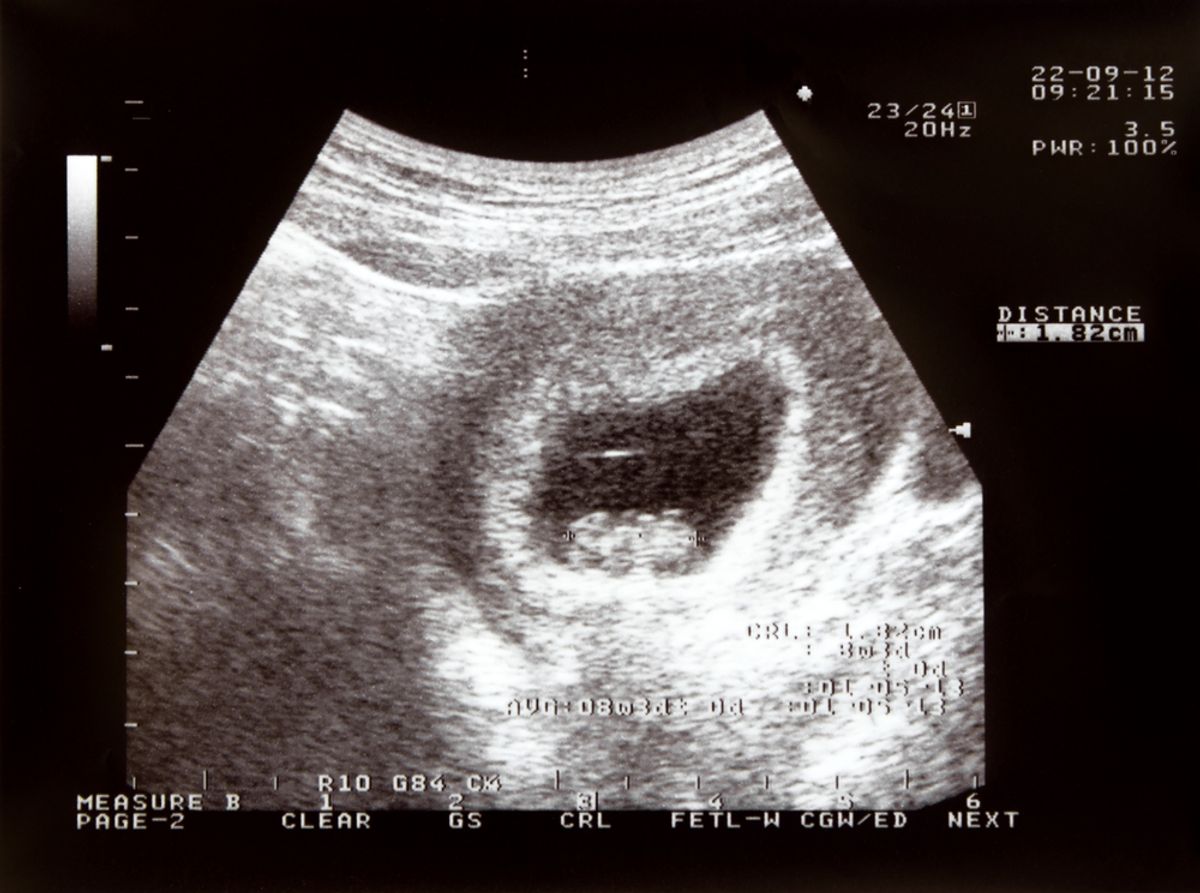Several states currently have laws requiring forced ultrasounds before women can access abortion care. The lawmakers behind these measures have been candid about their motives, as Oklahoma state Sen. Don Barrington explained when his state approved a bill to mandate women undergo a narrated ultrasound before being able to terminate a pregnancy: "[The ultrasound] could be a step in helping [women] make the determination whether they want to go through with the procedure or not go through with the procedure."
Mostly, though, these lawmakers assume women are stupid, and aren't capable of making informed medical decisions. But women aren't stupid, and invasive ultrasound laws do virtually nothing to change women's minds about abortion.
According to a comprehensive new study published in the journal Obstetrics & Gynecology, the overwhelming majority of women who seek abortion care do not change their minds after receiving and viewing a sonogram.
Researchers reviewed nearly 16,000 visits to a provider where women were given the option to view their ultrasound image before going forward with an abortion. While a majority chose not to look, women did opt to view the sonogram a little over 40 percent of the time. Among the women who elected to view the image, 98.4 percent still went forward with the abortion. (Ninety nine percent of the women who did not view the ultrasound went forward with the procedure.)
The small number of women who viewed the image and changed their minds were part of the 7.4 percent of patients who had expressed low or medium certainty about their choice upfront. Meaning, they had mixed feelings about whether or not to go forward with the procedure from the start, their uncertainty wasn't suddenly conjured by viewing the sonogram. Zero percent of women who expressed confidence in their medical decision were persuaded to change their minds after the ultrasound, because “such viewing does not alter decisions of the large majority of women who are certain that abortion is the right decision,” the researchers concluded.
But forced ultrasound laws are still harmful and present a very real barrier to women's access to reproductive health care, just not the barrier intended by the creeps at Americans United for Life.
As Tracy Weitz, Director of the Advancing New Standards in Reproductive Health program at the University of California, San Francisco, has explained at RH Reality Check, it's not the ultrasounds that are the problem -- it's the highly specific and intentionally punitive provisions of forced ultrasound laws that present the real burden to women.
Laws forcing women to undergo an ultrasound at least one day in advance of the procedure (and that the ultrasound be performed by the same physician who performs the abortion) contradicts medical best practice. Ultrasounds are generally provided by technicians, not physicians. Having a physician present for two days can drive up the cost of an abortion, putting the procedure out of reach for many low-income women. (This is all the more significant now that restricting insurance coverage for abortion is a major agenda item for anti-choice lawmakers across the country.)
"In all other aspects of health care, the trend is to use less expensive personnel to perform some patient procedures to both drive down health care costs and save higher-skilled personnel for more complicated activities," according to Weitz. "The reverse trend in abortion care is deliberate and is meant to make women opt out of abortion, not because of some information the ultrasound gives them, but because abortion is no longer affordable."
It's also clear that these laws are incredibly invasive. Less than half of the women in the study elected to view the ultrasound image, giving further weight to Weitz's position that laws making such viewing mandatory are an extreme "intrusion into patient’s rights to control the course of her health care."

Shares